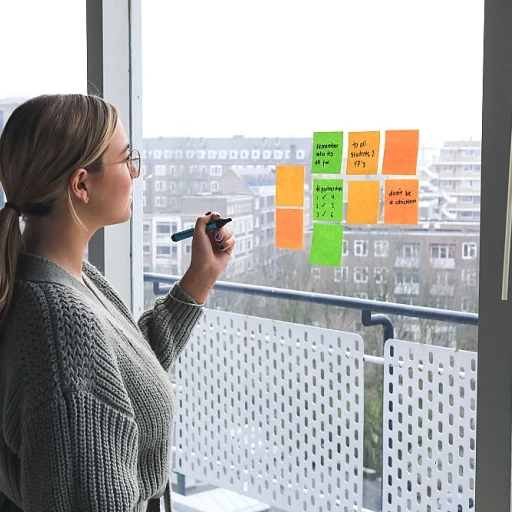Understanding the Role of HR in Employee Engagement
The Pivotal Role of HR in Fostering an Engaged Workforce
In today's fast-paced business environment, understanding the role of Human Resource (HR) management in enhancing employee engagement is more crucial than ever. The management's commitment to creating a supportive work environment significantly influences workforce engagement levels. An engaged employee tends to exhibit higher performance, contributing positively to the success of the organization. HR professionals are at the heart of crafting strategies to cultivate a company culture that promotes engagement. By implementing best practices in employee management, they ensure that team members feel valued and appreciated, thereby increasing their motivation and commitment to the company. Conducting regular engagement surveys is another critical function of HR. These surveys provide insights into how employees feel about their work environment and identify areas needing improvement. By addressing concerns highlighted in such surveys, organizations can improve employee satisfaction and reduce turnover, ultimately contributing to sustainable business success. Engagement strategies also include facilitating communication between employees and managers. By promoting open dialogue, HR can help bridge gaps and strengthen team cohesion. As employees engage in constructive conversations with management, they feel more invested in the company's goals. Moreover, HR plays a crucial role in integrating performance management systems that align individual goals with organizational objectives. By doing so, organizations not only enhance employee engagement but also ensure that their workforce is focused on achieving common targets, thus fostering a culture of collective success. To learn more about effective strategies for retaining employees and ensuring their continued engagement, visit Effective Strategies for Retaining Employees in Collections.The Importance of Continuous Learning in the Workplace
The Key Role of Continuous Learning in a Vibrant Workplace
In today’s dynamic work environment, the importance of continuous learning cannot be overstated. Employers have increasingly recognized that to remain competitive and foster a healthy work culture, it's crucial to offer ongoing professional development opportunities. By doing so, they keep their teams engaged, motivated, and ready to adapt to ever-evolving business challenges.
Continuous learning serves as a critical factor in elevating employee engagement levels. When employees are provided with the resources and encouragement to expand their skill sets, they are more likely to feel valued and invested in the company’s objectives. This fosters a sense of belonging and purpose, crucial elements that contribute to overall workplace satisfaction. Engaged employees are not only more productive but also play a substantial role in enhancing the company culture by promoting teamwork and innovative thinking.
Integrating continuous learning into an organization's framework can significantly impact employee performance and satisfaction. It offers professionals the chance to improve their competencies, thereby contributing to better performance management. Organizations that prioritize these development opportunities often witness an improvement in employee engagement strategies and survey results, indicating a positive shift in the workforce’s commitment and enthusiasm.
Moreover, continuous learning aligns with enhancing skills through diverse training programs, which can be a powerful tool for resource management. By building a knowledgeable and adaptable team, businesses can better manage changes, making them more resilient in unforeseen situations. It’s also noteworthy how this approach propels a business towards sustaining long-term employee engagement, reducing turnover rates, and fostering a work environment where employees feel heard and valued.
Incorporating continuous learning seamlessly into the organizational workflow can sometimes be challenging, but when done effectively, it leads to a more engaged and loyal workforce. The journey of embedding continuous learning within the workplace is indeed transformative, impacting every layer of the organization from management to the employees on the ground.
Strategies for Implementing Continuous Learning Programs
Driving Engagement Through Learning Initiatives
Continuous learning is pivotal in elevating the engagement levels within an organization. By instituting effective learning initiatives, companies can witness a remarkable transformation in employee engagement, contributing to overall business success and sustained workforce performance. Implementing robust continuous learning programs begins with a strategic approach. While developing these programs, it is crucial to align them with the company's goals and desired outcomes. This alignment ensures that the learning initiatives resonate with both employees and the management, cultivating an enriched work environment.- Diverse Learning Opportunities: Diversification in learning options through workshops, online courses, and seminars allows employees to choose pathways that best match their interests and career aspirations. This sense of control and choice increases their engagement and satisfaction.
- Incorporate Feedback Mechanisms: Engagement surveys and feedback systems allow the workforce to express their needs and preferences related to continuous learning. By understanding what employees feel and incorporating that feedback into learning strategies, companies can fine-tune their approaches to better meet employee expectations.
- Embrace Digital Tools: Technology plays a pivotal role in facilitating continuous learning initiatives. Leveraging digital platforms not only makes learning accessible and flexible but also helps in tracking and measuring progress effectively. Managers can employ performance management tools to monitor improvements and tailor future learning strategies accordingly.
- Encourage Collaborative Learning: Foster a culture where team members can learn from each other through mentorship programs and peer-to-peer sessions. This collaborative approach reinforces teamwork and strengthens the organization’s culture, making employees feel more connected and engaged.
Measuring the Impact of Learning on Employee Engagement
Evaluating Learning Initiatives
To truly enhance employee engagement, it's crucial to measure the impact of continuous learning programs. Understanding how these initiatives affect your workforce can guide future strategies and ensure that your efforts align with organizational goals. Here are some key methods to consider:
- Engagement Surveys: Regularly conducting engagement surveys helps gauge how learning programs influence employee satisfaction and motivation. These surveys can reveal if employees feel more valued and connected to the company culture.
- Performance Metrics: Assessing changes in performance metrics before and after implementing learning initiatives can provide tangible evidence of improvement. This includes tracking productivity, quality of work, and innovation levels.
- Feedback Mechanisms: Establishing channels for feedback allows employees to share their experiences and suggestions regarding learning programs. This feedback can help refine strategies and improve employee engagement over time.
- Retention Rates: Analyzing employee retention rates can indicate the success of learning initiatives. Engaged employees are more likely to remain with the company, reducing turnover and associated costs.
Aligning Learning with Business Objectives
To maximize the impact of learning programs, they must align with broader business objectives. This alignment ensures that employees not only enhance their skills but also contribute to the company's success. Managers and human resource teams should work together to integrate learning goals with organizational priorities.
By fostering a culture of continuous learning, companies can improve employee engagement, boost performance, and sustain a positive work environment. Engaged employees are more committed to their roles, leading to a more dynamic and successful organization.
Overcoming Challenges in Sustaining Employee Engagement
Identifying Common Barriers to Employee Engagement
Sustaining employee engagement within a company often encounters a variety of challenges. These hurdles can range from misalignments in management practices to an unsupportive work environment, which can hinder employees from feeling truly engaged in their roles. Understanding these common barriers is crucial for any organization aiming to improve employee performance and overall business success.- Management Disconnect: Engagement can plummet if there's a gap between managers and their team members. Inefficient communication and a lack of clear goals can make employees feel isolated and undervalued.
- Lack of Resources: Without proper human resource management, organizations may struggle to provide the necessary tools and resources employees need to thrive and feel connected to the company's mission.
- Inflexible Company Culture: A rigid company culture that doesn't adapt to changes or consider employee feedback often fails to foster an engaged workforce.
Implementing Best Practices for Engagement
Addressing these challenges means implementing effective engagement strategies that resonate with employees. Here are some best practices that can help:- Feedback Mechanisms: Regular engagement surveys provide valuable insights into the employee experience, allowing organizations to adjust strategies and address any concerns promptly.
- Promoting a Positive Work Environment: Encouraging collaboration and community within teams can significantly impact engagement levels. This includes recognizing team achievements and fostering a supportive company culture.
- Emphasizing Mental Health: Acknowledging mental health as a crucial factor in employee engagement through wellness programs ensures that employees feel cared for, enhancing their connection to the organization.












